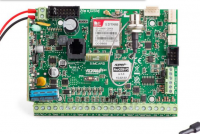FAQ
TL;DR: Two-wire NC ball valves can draw 12 W 24/7, costing ≈ 50 PLN per year; “such a valve needs power only during opening/closing” [Elektroda, Gagatek77, post #17292898] Three-wire models stop after 10–20 s travel. Why it matters: Picking the wrong actuator raises energy bills and flood risk.
Quick Facts
• Two-wire (NC/NO) valve power draw: 7–12 W continuous [Elektroda, Gagatek77, post #17292898]
• Three-wire motorised valve travel time: 10–20 s, 0 W holding [Elektroda, kood, post #17294896]
• Battery drain: 1 Ah ≈ 150 cycles at 1 A, 20 s each [Elektroda, kood, post #17294896]
• Typical DN20-DN32 brass actuator price: 150–500 PLN retail (market scan 2024).
• Recommended control contact rating: ≥ 2 A @ 250 VAC for direct switching (IEC 60730).
Which valve type is best for alarm-triggered water shut-off?
Choose a three-wire, bi-stable motorised ball valve. It needs power only during 10–20 s motion, then holds position without current, avoiding heat and standby cost [Elektroda, Gagatek77, post #17292898]
Why avoid two-wire solenoid or NC ball valves?
Two-wire NC/NO valves keep their coil energised in one state, drawing 7–12 W nonstop. That raises annual energy cost by ≈ 50 PLN and keeps the body hot, accelerating failure [Elektroda, Gagatek77, post #17292923]
Do three-wire valves include limit switches?
Yes. Internal microswitches cut motor power once fully open or closed, so no external timer is required [Elektroda, Gagatek77, post #17292898]
Will the valve overheat if left powered?
A three-wire unit idles at 0 W, so it stays cool. Continuous-duty two-wire coils reach temperatures that are “very warm; you can’t keep your hand on them” [Elektroda, Gagatek77, post #17294739]
How much battery does a 12 V actuator use during outages?
At 1 A for 20 s per move, 150 cycles consume just 1 Ah. A standard 7 Ah alarm battery handles months of typical use [Elektroda, kood, post #17294896]
Can I power the valve from the alarm panel?
Yes, if current draw stays within the panel’s AUX rating and the battery is sized for outage operation. Otherwise add a separate 12 V DC buffered supply and switch only the control wires from the panel relay [Elektroda, kood, post #17295169]
What happens if mains fails while the alarm is on?
A 230 V valve without backup stays frozen; leaks remain undetected. Using a 12 V valve on the alarm battery closes even during a blackout, covering that edge case [Elektroda, kood, post #17294924]
Could frequent closing damage hoses via water hammer?
Slow-acting motorised ball valves generate minimal hydraulic shock because the ball rotates gradually, unlike snap-shut solenoids [Elektroda, Krzysztof Kamienski, post #18095792]
Recommended brands or price points?
Mid-tier brass actuators from Afriso, Herz or CWX-25S clones cost 150–500 PLN. Higher price does not always equal longer life; buy from a dealer that honours warranty [Elektroda, Gagatek77, post #17292954]
How do I wire a three-wire valve to a relay?
- Connect N (blue) permanently.
- Wire COM of relay to L supply.
- Wire NO to ‘Open’ lead and NC to ‘Close’ lead.
The valve moves only while the relay toggles states.
Edge case: valve fails to reach position—how to detect?
Route both limit-switch leads to spare alarm inputs. Missing ‘closed’ confirmation within 30 s can trigger SMS or siren, preventing silent flooding [Elektroda, kood, post #17295081]
Can flood sensors replace automatic shut-off?
Sensors warn quickly but still allow water to escape until you act. Combining detectors with an auto-closing ball valve offers the fastest cut-off [Elektroda, vwszeldon, post #18097992]







